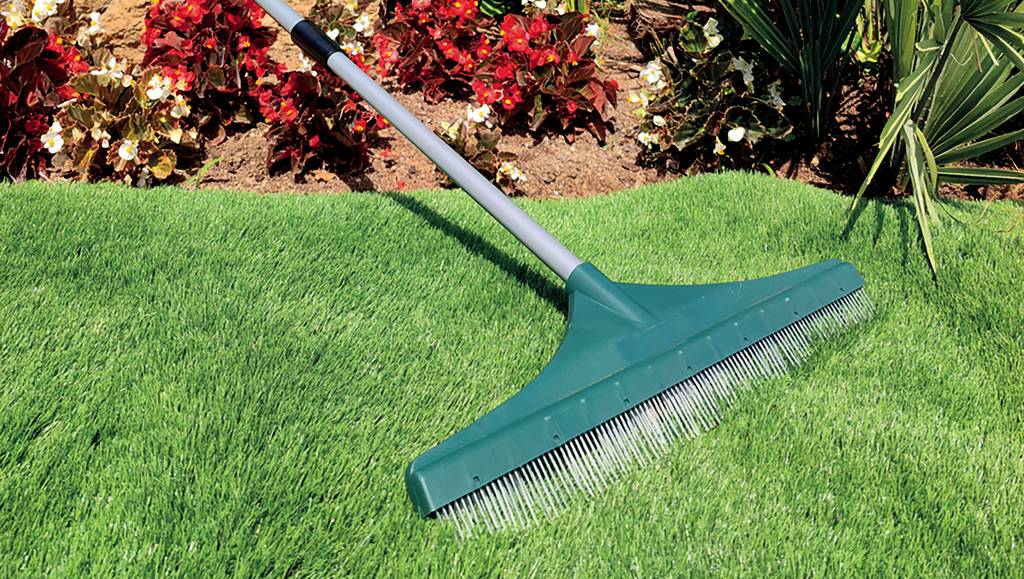Step-by-Step Guide to Cleaning Fake Grass

Investing in an artificial lawn means you can say goodbye to the maintenance tasks you might have hated when you owned a real lawn: mowing, strimming, weeding, watering, and so on.
With that said, artificial grass isn’t completely maintenance-free. Your synthetic lawn will still need a little TLC to stay looking its best.
Here’s a simple, step-by-step guide to cleaning your fake lawn:
Step 1: Brush it Regularly
The first step on your maintenance checklist for artificial grass is regular brushing.
Give your fake grass a good brush regularly to keep the blades standing tall and remove any debris. It’s advisable to brush it once a month to prevent it from getting matted and flat.
Step 2: Hose it down
If you live in a rainy region, rainwater will wash away most of the dirt that settles in your artificial lawn.
But it’s still a good idea to give it a quick rinse with a hose around once a month to wash away dirt and dust that may have become lodged deeper into the turf.
Step 3: Address Stains ASAP
Third on your list of maintenance tasks for artificial turf is to address stains as soon as you can. The quicker you tackle a stain, the easier it will be to remove.
Unless your turf installer tells you otherwise, you should generally use a clean cloth dipped in a warm water and dish soap mix to blot up any spills. Avoid rubbing the spot, as this can spread the stain.
Step 4: Remove Pet Mess
If you have pets, they’ll probably want to do their business on your turf. But pet mess can stain and leave unpleasant smells if you leave it to fester.
You’ll need to scoop up any solid waste immediately. Use a pet-friendly cleaning product or something recommended by a fake grass cleaning professional to remove any pet-related stains and odors.
Step 5: Address Mold and Mildew
If your synthetic lawn often gets wet and waterlogged, there’s a chance that it could start accumulating mold and mildew:
For stubborn mold or mildew, use a diluted bleach solution (make sure you rinse the area thoroughly afterward). Contact your grass installer if the mold problem persists, since this could indicate an issue with drainage.
Final Word & Extra Tips
So, now you know the five steps to maintaining your artificial lawn. It’s really quite simple, and, you’ll be happy to know, far less back-breaking the maintaining real turf.
To end this article with a few final tips, something important to note is that you shouldn’t use strong chemicals that can damage your artificial grass. Always check with your turf supplier or installer if you’re not sure whether or not you can use a certain cleaning product.
Additionally, you may need to invest in a professional cleaning company if your lawn is starting to look a bit shabby or has accumulated stubborn stains. It’s generally recommended that you get your artificial turf professionally cleaned once a year to keep it looking at its best.



